










Would you like to launch an exciting career in Australia’s growing space industry?

Macquarie’s Bachelor of Engineering (Honours) can propel your career into orbit by allowing you to specialise in civil, electrical and electronic, mechanical, mechatronic or software engineering. This degree uniquely combines a solid theoretical foundation with practical skills development and industry experience.
You’ll enhance your experience by joining groups such as the student-led Macquarie Orbital, which has been operating a satellite ground station via the Space Operations Centre in the School of Engineering since 2020. They are currently designing and developing the University’s first satellite, MQube-1, and exploring the potential of growing plants in space.
Ready to aim for the stars? Learn more at mq.edu.au/study/find-a-course/engineering/_
All the tips and hacks needed to get from maybe to yasssss for engineering

P6 Think like an engineer Plus, things engineers don’t think about P8 Can’t decide on a major? Don’t panic
P9 STEM employers team up
P10 An engineering grad at CBA on all the fun social activities
P11 Meet an engineer working on the 5G in your phone
P12 10 surprising engineering careers. Spoiler: it’s not all hard hats
P13 If uni’s not your thing, you’ll want to read this inspiring profile
P14 Tips and advice from grads
Combine engineering (STEM) with your passion (+ X) to discover your dream career Engineering + …

P15 AI & Robotics
Our new overlords are coming… or will engineers navigate us through the age of AI?


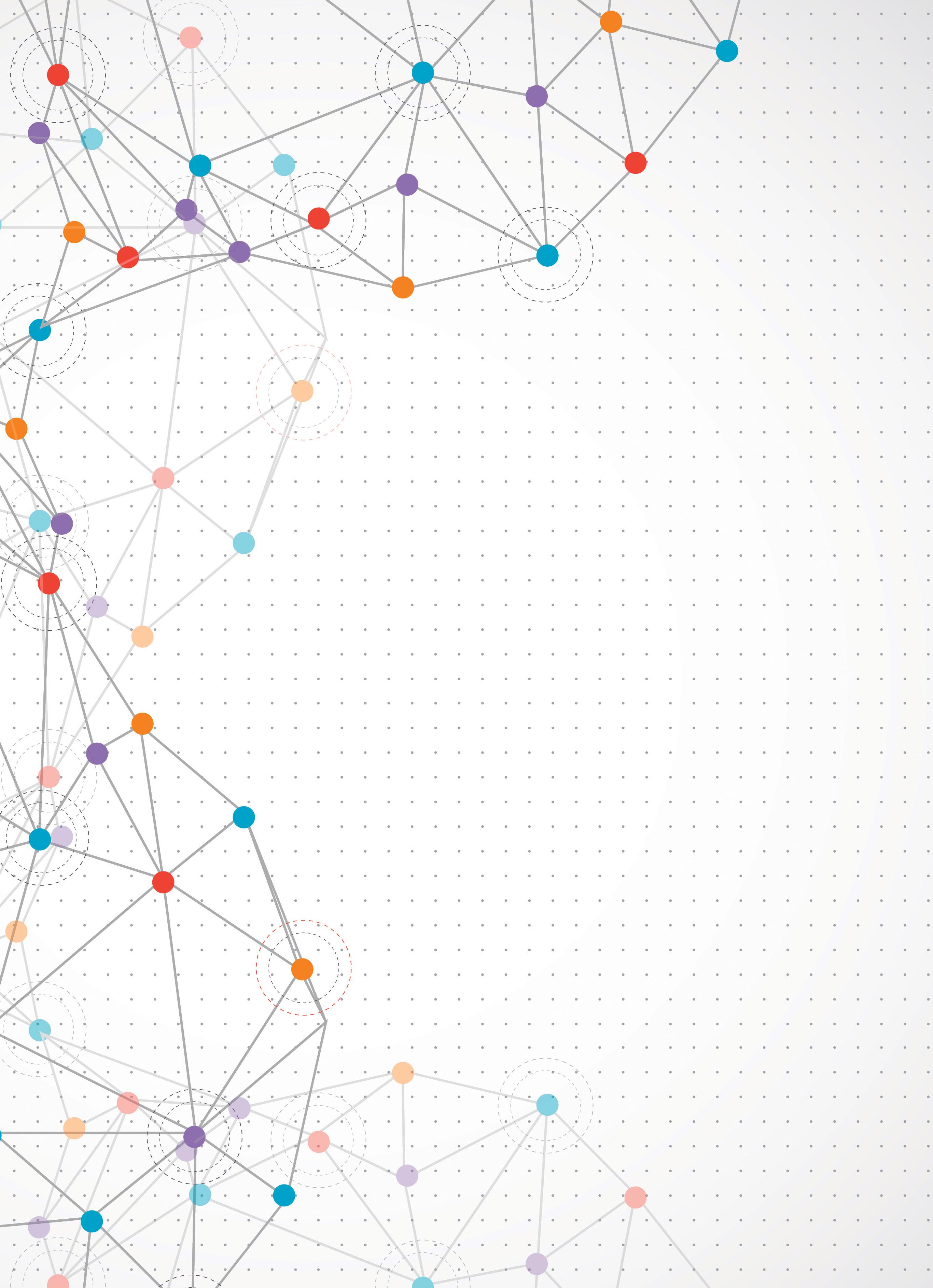
P18 Health
You can use engineering smarts for good, like designing a brighter future for people with paralysis
P22 Climate Engineers will help us harness nature’s power and build a greener planet

P25 Megastructures
If you study engineering now, you could end up working on the big builds of the future

P28 Aerospace
From drone technology to space tourism, the sky’s no longer the limit for aerospace careers
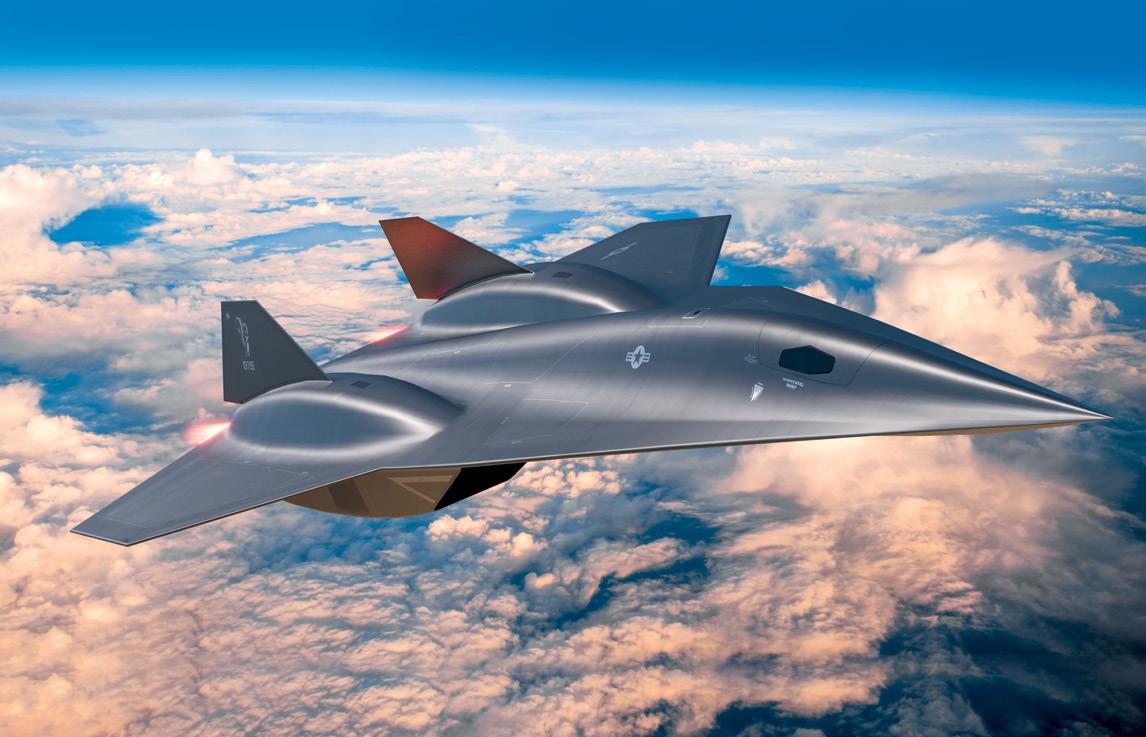
P32 Aviation
The qualifications that will open doors to jobs that will fly you around the world
P36 Design your own aerospace engineering mission plan
In the wake of Australia’s contruction boom, people with engineering skills remain in high demand, but not just in traditional building; the industry is innovating to help meet challenges such as climate change, our ageing population and growing cities. Engineers of the future will utilise AI, robotics, quantum tech and automation to do everything from delivering better healthcare to cutting carbon emissions.SHUTTERSTOCK

Engineering careers are changing, and so too the types of skills employers are looking for

When I started my studies in law and commerce, I never imagined I’d work for a technology company. But it was IBM’s graduate program that kicked off my career and led me on a path that would take me all around the world.
Underpinning all my roles has been the idea of using technology to solve problems. Now that I’m at Telstra, my message to the thousands of engineering graduates we employ is to remember it’s not just about the technical aspects.
There are lots of people in the world who can identify problems, but we need people who can actually solve them. And if you can combine your STEM skills with a knowledge of business and an ability to communicate well, you’ll have an advantage when it comes to working with others to do great things.

If you had worked as an engineer at Telstra 20 years ago, it would most likely have been in




mechanical engineering. Today, we have thousands of software engineers working alongside data scientists, business leaders and network engineers on projects that help millions of people. Teamwork, problem-solving and collaboration are all key attributes, along with the STEM skills that come with studying maths and physics at school.
In this magazine you’ll meet people solving problems in everything from brain health to renewable energy. I’m especially inspired by all the young women we see signing up for software and network engineering roles.
I hope you’ll be inspired to join them!
Lynn Currie Executive Financial Services Industry, Telstra
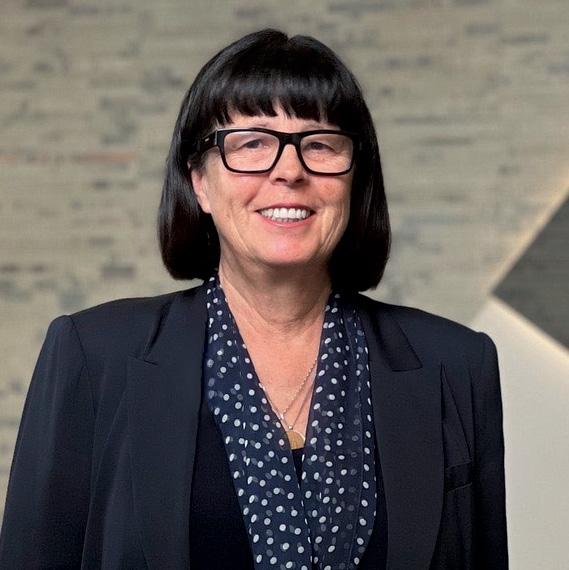
teamwork, problemsolving and collaboration are all key attributes”
It’s no surprise that an engineer’s brain is full of innovation and STEM smarts – but there’s way more to engineering than that
Why they studied engineering
Even if you don’t become an engineer, your engineering skills will be useful in any role.
Why there aren’t any jobs
Engineers are up there with Australia’s most in-demand professionals. No need to stress over job opportunities.
Why robots have taken their jobs
Engineering is future-proof. Engineers will be creating the AI, not competing with it.
Aside from stressing over deadlines, projects and how to use the freshest tech, engineers hoard some pretty cool and diverse skill sets. Here, we take a look inside the mind of a civil, software, site or anything engineer! – Cassie Steel
It’s not just artists and musicians who have to flex the left side of their brains: creativity is crucial for problem-solving – something engineers do every single day! Whether their specialisation is tech, energy, robotics or construction, thinking up out-of-the-box solutions is a huge part of the gig.

Like any next-gen gig, the probability that if you stick with engineering you can say goodbye to maths is pretty low! Maths and data skills are prerequisites for almost every engineering role going. Luckily, in 2023 it’s less about snoozy spreadsheets and more about coding, developing, stats, data science and social analytics.
Being an engineer doesn’t mean working solo all day. Chatting to people – and navigating different personalities – requires serious communication smarts. So embrace those group assignments because once you graduate, those collaboration skills will be handier than a hard hat.
It’s super healthy for an engineer to wipe their minds of work and focus on their ‘X’: a passion, hobby or random interest. And finding your ‘thing’ could be the key to kicking career goals too! The STEM + X formula involves taking your fave STEM subject (engineering) and adding it to your passion (the environment, say) to create a career that’s perfectly you.
Fluent in everything, much? Depending on your speciality, niche hard skills such as Python, PowerPoint, Excel, social media, data analytics, advanced research and statistics are up there with the advanced innovation smarts of an engineering grad.
Who says you can’t be an engineer and a TikTok star? Our feeds are full of engineers doing their thing and tweeting/sharing/filming their work days. Head to page 36 for a list of our fave accounts.
Your career can take a variety of twists and turns, steps and stages.
yourcareer.gov.au can help you make informed decisions about your learning, training and career development.

Got plans to do some study or training, start working, or take a gap year?
Download the School Leavers Information Kit for information about:
• study or training options to upskill
• financial support for further study
• how to nail a job interview
• and more!
yourcareer.gov.au/schoolleaver
The thought of three years stuck in a classroom environment at uni almost led Melinda to drop out of school in Year 12. But some helpful career advice and hands-on work experience got her through. Today, she’s back in the classroom: this time around as the teacher!
“Everyone was telling me I was always going to go to uni, so I thought that was the only pathway available for someone who was good at school,” Melinda says.
She signed up for a heavy subject workload with the aim of getting an engineering scholarship, and then things all came unstuck. “Halfway through Year 12, I realised I really didn’t want to go to uni; I didn’t want to sit in the classroom for the next three years studying,” Melinda says.
With school support, Melinda spent the last months of Year 12 working one day a week in a local engineering factory. This made it easier for her to transition into a trade when she finished.

“I had my final chemistry exam on 11 November, and on 12 November I started my apprenticeship. I knew what I was getting into and I was happy to do it,” she says.
In 2014, she was named Australian Apprentice of the Year at the Australian Training Awards.
As her career progressed, Melinda says she wanted to do more to mentor and teach new apprentices coming into the trade, but that wasn’t always feasible on the job.
“Then I got a call from one of my teachers at TAFE and they said: ‘How would you like to try your hand at teaching?’ And I said: ‘Yeah, let’s give it a try’,” she recalls.
“I started off as a casual, just doing night classes. And after I did that for six months, I realised I loved it.” –
Charis Palmer melindaengineeringjeffery trades teacheri thought uni was the only pathway”
Melinda Jeffery wasn’t keen on uni so she chose a vocational pathway and became a star apprentice instead. She now teaches others how to have successful careers
There are many paths to becoming an engineer. Explore your options here!

So you want to get an engineering degree? Awesome! A good first step is to figure out what you want to specialise in.
Engineering majors include:
• Aerospace
• Chemical
• Civil
• Environmental
• Electrical
• Mechanical
• Mechatronic
• Quantum
• Renewable energy
• Telecommunications
Once you’ve decided on a major, you can research which universities offer your chosen speciality. When you’ve found your dream qualification, take note of any entry requirements it might have. Lots of engineering degrees require that you’ve studied Year 12 physics and maths (usually extension 1).

Can’t decide on a major?
Don’t panic! Some unis, including UNSW, RMIT, University of Wollongong and The University of Queensland, offer a flexible first year option. This means you can explore different specialisations through electives in your first year before locking in a major.
Not keen on going to uni or want a more hands-on engineering gig? Head to TAFE to skill up in areas such as fabrication, welding, machinery and metal work. You could also complete a…

• Certificate I in Engineering and become a metal engineering process worker
• Certificate II in Engineering and become a jewellery maker
• Certificate IV in Engineering and become an advanced fabrication technician
• Diploma of Engineering
– Technical and become an engineering technologist
• Advanced Diploma of Engineering (Mechanical) and become a mechanical engineering technician

There are many pros to choosing a VET pathway: qualifications are cheaper (or free!) and take less time to complete than a bachelor ’s degree, plus you’ll learn practical skills that will make you stand out when applying for jobs!
Pranavi Gangapuri loves the diversity of engineering and the fun social activities that her graduate role offers

In high school, Pranavi enjoyed biology and chemistry, but she was also super into IT so was keen to combine science and tech in her future career.
Her Bachelor of Biomedical Engineering delivered on both fronts, but today Pranavi flexes her skills even more as a graduate developer at the Commonwealth Bank (CBA). A typical day involves writing code, working as part of a team and writing documentation. And Pranavi’s a big fan of the structure of CBA’s tech graduate program.
“I work with other awesome graduates and participate in activities like the amazing race, trivia nights and social events,” Pranavi says.
Pranavi encourages students to explore different engineering subjects by doing online courses or activities readily available from universities such as Harvard.
“The field of STEM and specifically engineering is very diverse!” she says. “There are some cool and really interesting spaces arising with artificial intelligence, machine learning and data analysis being combined with software development.”
Pranavi also loves volunteering for educational events, including speaking to young people in school, especially girls, about the importance of STEM education. She credits her STEM study with teaching her about the importance of always asking questions, even if you feel awkward about doing so.
“Sometimes what you think are silly questions are actually really important to be raised!”
 – Charis Palmer
– Charis Palmer
sometimes what you think are silly questions are actually really important to be raised”Pranavi Gangapuri technology graduate
As a grad network software specialist at Telstra, a typical day for Brooke involves working on cutting-edge technology, including robots, at Telstra’s 5G Innovation Centre on the Gold Coast.

“I work on multiple projects while also engaging with customers to showcase what Telstra’s emerging network technologies are,” she says.
She might be a networks ninja now, but Brooke initially had her heart set on sport and a career as a physiotherapist. She even dropped some STEM subjects at the start of Year 11. “But within two weeks of not doing maths subjects I started to miss those classes and swapped into maths and physics,” she says. “Then, by the start of my final year of high school, I had decided I wanted to study engineering.”
After finishing school, Brooke managed to lock in both her passions, taking a gap year to work and save money before moving from Tasmania to Brisbane where she completed a Certificate III in Sport and Recreation.
“I still do athletics today and managed to keep training during university, which helped me to find a second family in Brisbane,” Brooke says.
While completing her studies, Brooke did internships at Rio Tinto and Boeing. Both helped her land her current gig as a network software specialist at Telstra.
“I’m always learning,” Brooke says. “I have the ability to gain experience from some of the best in the business, and since Telstra is a telecommunications leader, I’m often working on initiatives that haven’t been achieved before.”
Brooke has also been involved in the Girls in Tech event, a collaboration between Telstra and the Commonwealth Bank.
“It meant a lot to me to develop something that lit a spark in students. It’s really rewarding to be able to show the cool work women in technology do and excite others into taking the same path” – Charis Palmer
i have the ability to gain experience from some of the best in the business”Bachelor of Electrical and Biomedical Engineering (Honours), University of Queensland
Two of the biggest employers of graduates in the country, the Commonwealth Bank (CBA) and Telstra collectively serve millions of Australians every day. Sometimes they team up to solve big problems, meaning as a graduate working for either company you could be part of some pretty exciting nation-changing projects!

Ifyou’re a software engineer at CBA or Telstra, one of the new projects you could be a part of is Scam Indicator, a new tech solution that uses data and AI to detect and prevent financial scams before they even occur.
Scams are a big deal in Australia –in the last year alone they’ve cost Australians over $3 billion. More than 60% of scams are started via text message or phone, so stopping the scammers before they even get to your phone can make a big difference. Doing so will require a team of graduates and experts who are skilled in data science, engineering and IT.
“As a software engineer at Telstra, this is the kind of job you might be doing where you’re actually helping the community,” says Lynn Currie, executive, Financial Services Industry at Telstra.
Every year, CBA and Telstra partner up to run Girls in Tech, a Sydney event featuring demos, talks, workshops and heaps of inspo for young women considering a career in STEM.

At Girls in Tech, students get to hear from superstars like engineering professor Fatemeh Salehi, whose work is helping to advance new energy technologies for clean renewable fuels such as green hydrogen. Graduates like Telstra network software specialist Brooke Jones (see page 11) get to be involved on the day, encouraging and inspiring the next generation of talented engineers.
“It is really rewarding to be able to show the cool work that women in technology can do and excite others into taking the same path,” Brooke says.
If you think engineering means rocking a hard hat all the time, think again!
The engineering skills you gain from qualifications and degrees can set you up to work in all kinds of places: outdoors, at live events, in the classroom and even in space. Here are 10 surprising careers involving the ‘E’ in STEM that we think everyone should know about.
Designs, makes and repairs necklaces, earrings, bracelets and rings, usually using metals and gems. Get there: Certificate II in Engineering, TAFE NSW

Has a range of space duties, including piloting spacecraft and conducting experiments and maintenance.

Get there: Bachelor’s degree in engineering, then apply to an overseas space program for training (though you must be a citizen of that country to be eligible)
Installs and operates sound equipment at live concerts, theatre productions and other events.
Get there: Diploma of Music (Sound Production), TAFE SA
Brings virtual reality environments to life through coding so users can interact with them.

Get there: Bachelor of Software Engineering (Hons), University of South Australia
Assesses written reports and descriptions about new inventions to see if they comply with legal requirements.
Get there: Bachelor’s degree in engineering
Designs and develops new sports equipment and tech that will be useful for athletes and sports teams.
Get there: Bachelor of Engineering (Mechanical, Hons), The University of Adelaide
Teaches students science, technology, engineering and maths subjects, usually specialising in one area.
Get there: Master of Teaching (Secondary) STEM, Western Sydney University
Works in a construction team and creates technical drawings for new building designs.
Get there: Certificate IV in Engineering Drafting, TAFE Queensland
Builds, installs and repairs heavy machinery, such as tractors, trucks and excavators.
Get there: Certificate III in Engineering –Mechanical Trade, TAFE NSW
Plans, coordinates and controls the operation and maintenance of a ship’s equipment and plants.
Get there: Advanced Diploma of Marine Engineering, TAFE WA

The age of AI is here, and engineers are going to play a crucial role in navigating us through it
Check out these top five careers that integrate robotics and AI in engineering:
1Chatbot engineer: Develop and maintain AI systems that mimic human conversation. You’ll need strong skills in coding and natural language processing.

2Machine learning specialist: Enjoy solving puzzles? In this job, you’ll be teaching computers to learn from data – think advanced algorithms and statistical modelling.
3Automation engineer: In this gig you’ll design, program, simulate and test robotic machines. Get ready to learn about system integration and industrial control systems.
4AI educator: Help others understand complex AI concepts. Strong communication and patience are key.
5Process change engineer: You’ll look at how robots can improve existing systems and need a keen eye for detail and problem-solving skills.
Revenue in Australia’s robotics market is projected to reach a hefty $860 million in 2023, and the future is even brighter. By 2027, that number is expected to climb to $1 billion thanks to a steady growth rate of 3.9% every year.
Here’s a glimpse of a possible future role that doesn’t (quite) exist yet...
The job: Prompt engineer What is it? A prompt engineer could design and fine-tune the prompts given to AI systems (such as OpenAI’s ChatGPT and Google’s Bard) to get more accurate, helpful and appropriate responses.
Skills: This job might require a mix of linguistics, computer science and even psychology or sociology. You’ll need to understand not just human language, but also how computers can best mimic it. Who’s hiring? OpenAI, Microsoft and Google are the obvious ones, but the list will grow.
Heard of ChatGPT, the latest big thing in AI, but not sure what it’s all about? Who better to ask than the AI itself!
AI-generated response: Hi, I’m ChatGPT! I’m a product of OpenAI, a sophisticated AI system designed to mimic human-like text. It took a team of diverse engineers to create me. Software engineers worked on my coding, while machine learning specialists taught me to learn from billions of sentences. Natural language processing engineers helped me understand and generate human language. And data engineers managed the massive amounts of data I was trained on. I’m a perfect example of what a career in robotics and AI might lead to! – Gemma Chilton
Can you guess what a robotics business founder’s favourite subject in high school was?
English! Sarah knew she wanted to be an engineer during school though – she even founded her very own company, ZEST Robotics, when she was just 16.
Through ZEST Robotics, Sarah is an advocate for females in STEM.
“I organise and deliver quality engineering, science and robotics education to girls through hands-on workshops and events,” she explains. Sarah also speaks to schools, industry and government about the importance of establishing more female-focused opportunities for girls to discover STEM inside schools.
The coolest part of her job is what she calls the ‘lightbulb moment’, which happens when a student who has been struggling with a coding concept finally understands why their code is or isn’t working for them.

“This is an important moment in the learning journey because it shows that through resilience, many things are possible!”
Sarah believes STEM teaches strong problem- solving skills, which have been important in every aspect of her life. She is also excited about the upcoming opportunities for robotics and AI to be applied in many industries.
As someone who’s passionate about both business and engineering, it was a no-brainer for Sarah to study a Bachelor of Business / Bachelor of Engineering at QUT. On going to uni, she says: “I have discovered that some of the most valuable parts of the learning experience are the communities and connections you build while studying. Join student clubs, attend university events and ask lots of questions!”
As for the future, she would love to undertake further study in AI and complete a Master of Robotics and Artificial Intelligence at QUT. She also wants to continue to grow ZEST Robotics and reduce the gender gap in STEM. – Louise

Bachelor of Business (Management) / Bachelor of Engineering (Mechatronics) (Honours), QUT
MeersENGINEERING
UNDERGRAD
Bachelor of Engineering (Robotics and Mechatronics), Monash University
Bachelor of Engineering (Mechanical) (Honours) / Bachelor of Mathematical and Computer Sciences, The University of Adelaide
Bachelor of Engineering (Honours) / Master of Robotics and Artificial Intelligence, QUT
Bachelor of Engineering (Mechatronics) (Honours), UNSW
VET COURSES
Certificate II in Electrotechnology, TAFE NSW
Certificate IV in Integrated Technologies (Robotics Control Systems), TAFE WA
ENGINEERING + AI AND ROBOTICS + JOBS
Automation engineer $56K–$124K
Data engineer $67K–$133K
Machine learning engineer $59K–$141K
Software engineer $59K–$122K*

Salaries according to payscale.com
ENGINEERING
some of the most valuable parts of the learning experience are the communities”Sarah Eisenmenger company founder
Akshat Sharma’s curiosity and perseverance have seen him help other aspiring engineers towards a dream career like his
With his deep fascination for planes and all things that soar through the sky, Akshat was always going to have one eye looking at the clouds. But today he’s exploring the depths of the oceans in his role as an application engineer at artificial intelligence-based robotics company Advanced Navigation.

“I get to test and support state-of-the-art technology, including our untethered and fully autonomous underwater robot, Hydrus,” Akshat says.

Hydrus is a fully submersible drone used for undersea research, surveys and exploration. With some serious engineering and tech on board, it can gather high-resolution data in the ocean, whether it’s monitoring coral reefs, capturing underwater cinematography or inspecting offshore wind turbines.
In school, Akshat initially wanted to be a police officer. “But as I delved deeper into the field, I became fascinated with forensics. During my research on forensics, I discovered the remarkable technologies that forensic scientists employ in their daily work, igniting my curiosity in the field of technology,” he says.
To land his dream gig working with drone technology, Akshat studied maths, physics and
chemistry at school and then computer systems engineering at Edith Cowan University (ECU).
At uni, he became the founding president of the Engineers Australia Student Society and is now deputy chair at Young Engineers Australia, WA.
Akshat says one of the most valuable lessons he learnt during his STEM studies was the importance of problem-solving and perseverance. “Having the ability to persist through setbacks, adapt strategies and analyse problems from various angles has proven invaluable.”
That early obsession with studying aircraft models and aerodynamics, borne of curiosity, is paying off for Akshat today.
His advice to aspiring robotics engineers? “Build a range of skills beyond just technical expertise and stay curious!” – Charis Palmer
build a range of skills beyond just technical expertise”Founding president, Engineers Australia Student Society, Edith Cowan University Intern and solutions engineer, Nexxis Bachelor of Computer Systems Engineering, Edith Cowan University Application engineer, Advanced Navigation deputy chair, Young engineers australia, western australia SHUTTERSTOCK

If you’re interested in how the human brain works or you want to help people, this new engineering career could be for you
What if you could drive a car or shop online using nothing but your brain? That’s the promise of braincomputer interfaces, and while it may sound like science fiction, researchers and engineers are bringing it closer to reality. Connecting the brain’s electrical activity to an external device, usually a computer or robotic limb, could help some of the more than 30 million people worldwide who have paralysis. Some of the devices are non-invasive and look like a hat with multiple wires. Others involve open-brain surgery, with sensors implanted directly into delicate brain tissue to read neural signals and enable patients to operate external devices. This is the approach being taken by Neuralink, the US brain-computer company founded by Elon Musk.


One device from brain-computer startup Synchron uses blood vessels to implant electrodes in the brain. In 2022, researchers placed the first implant into the blood vessel of a patient who had lost their ability to move and speak due to amyotrophic lateral sclerosis (ALS). In early trials, patients were able to control a computer and complete daily tasks such as online banking, shopping and texting within a few months of the procedure. Building on some of these early breakthroughs will require coders, neurosurgeons and engineers – a great career opportunity for those who want to use engineering to help change people’s lives.
–CharisPalmerWATCH a soldier control a robot with his mind
Who’s hiring?
In the US, companies such as Neuralink and even Meta (Facebook) are hiring engineers to work on brain-computer interfaces. If it’s biomedical engineering more generally that you’re interested in, look to companies such as General Electric, Medtronic, Cochlear, CSL and ResMed
Some of the early funding for research into brain-computer interfaces came from the US Defense Advanced Research Projects Agency. And it’s no surprise the military is interested in how to apply the technology.

Australia’s Defence Innovation Hub is currently funding UTS research exploring how it can be used to improve the way soldiers interact with robotic systems during tactical missions.

At present, soldiers must look at a screen and use their hands to operate robotic platforms. If they could control a robot with just brain signals, it would mean they could keep their hands on their weapon, potentially enhancing their performance.
Check out these careers that integrate engineering and medical science:
If you love building things, then this job could see you tinkering with medical devices.


Want to work with patients? In this job you’ll be working on clinical trials of new medical technology.
Enjoy solving problems? In this job, you’ll be working with scientists and other engineers to identify and test new solutions.
ENGINEERING + HEALTH + STUDY
UNDERGRAD
Bachelor of Engineering (Honours) / Master of Biomedical Engineering, UNSW
Bachelor of Science (Biomedical Engineering Systems), University of Melbourne
Bachelor of Engineering (Research and Development) (Honours), ANU
Bachelor of Engineering (Robotics and Mechatronics Engineering ) (Honours), Monash University
VET COURSES
Certificate III in Electronics and Communications, TAFE NSW
Advanced Diploma of Biomedical Engineering, Engineering Institute of Technology
ENGINEERING + HEALTH + JOBS
Biomedical engineer $55K–$92K Research engineer $62K–$130K

Software engineer $59K–$118K*
*Salaries according to payscale.com
ENGINEERING
SGT MATTHEW BICKERTONFuturistic movies and games inspired Daniel to study biomedical engineering and delve deeper into how to make his dream a reality. After graduating from high school and studying a Bachelor of Biomedical Engineering at the University of Melbourne, Daniel moved to Sydney to do a master’s degree at the UTS Computational Intelligence and Brain Computer Interface Lab.
For his master’s project, he worked on decoding the signals that people’s brains produce when thinking about navigation. For example, whether to go left or right.
This led into his PhD project, which uses a brain-computer interface to control Defence robots such as drones and small land vehicles.

Daniel says the system responds to a specific stimulus in the brain. The user wears a virtual reality headset and thinks about where they want the robot to go. The brain machine interface decodes the brain signal and transmits it wirelessly to the robot.
“It’s been developed for Defence use, but could also help people with disabilities,” Daniel says.
Daniel specialises in brain signal processing, but biomedical engineers also tap into the signals in other parts of the body.
“Biosignal processing is not just about brain signals, but muscle signals and heart signals too,” he says.
For brain signal processing, Daniel says coding skills are a must, and it’s a good idea to keep up with the latest developments in AI and machine learning. If you’re more interested in understanding how the brain works, neuroscience may be your perfect fit. And there are plenty of opportunities to make your mark in overcoming the challenges of decoding brain signals to make mind-controlled devices accessible to everyone.
“We are still pretty far off – this is ongoing research,” Daniel says. – Nadine Cranenburgh
Bachelor of Biomedical Engineering, University of MelbourneDavid Lambkin went from building parts for mining excavators to helping medical researchers, all with engineering
With his obsession for LEGO and building things, David always wanted to be an engineer, but as someone who also did extra subjects at school just to learn more, he was never going to have a one-track career!
At uni, David specialised in mechatronics, a type of engineering that combines robotics with electrical and mechanical systems.
“University was an interesting experience, but I guess it wasn’t necessarily what I was expecting in that it was a lot of theory and not so hands-on.”
But he persevered and was rewarded with a job at a manufacturing company that did let him get his hands dirty – making parts for big Caterpillar trucks used on mining sites.
When the 2015 mining downturn happened, David’s job, along with many others, was made redundant, so he got busy again with a Graduate Certificate in Innovation and Commercialisation.

“I thought that if I could diversify my skills a bit it would help me, but the course had a statistical component and I was like, ‘oh, that’s actually quite interesting’,” he says.
When David got talking to a medical researcher about his newfound interest in statistics, he realised it had very real applications in the health sector. He later enrolled in a Master of Biostatistics and, while studying, got a job with the Primary Health Network in Newcastle working with data. “It got me used to some of the terminology that’s used in some of the medical fields.”
Today, David is a biostatistician at the Hunter Medical Research Institute, where he helps researchers figure out if one particular drug or health treatment is working better than another.
His advice to people just starting out? “Try to stay passionate about learning – when you’re still trying to figure out what’s going on and then it clicks, that’s when it becomes meaningful.”
And remember: there are lots of paths to doing what you love! – Charis Palmer
Bachelor of Engineering (Mechatronics), University of Newcastle Design engineer, Bradken Graduate Certificate in Innovation and Commercialisation, University of Newcastle Master of Biostatistics, University of Sydney Biostatistician, Hunter Medical Research Institute Community Resourcesuniversity wasn’t necessarily what i was expecting”
As one of the biggest global issues we’ve ever faced, climate change is a hot topic (pun intended). Luckily for us, engineers in Australia and around the world are stepping up to the plate, using their skills and creativity to come up with innovative solutions and technologies to combat the climate emergency and help save our planet.
Think: harnessing the wind or tapping into the abundant power of the sun to generate clean and renewable energy. Revolutionising the world of transportation with electric vehicles (EVs) or designing sustainable cities that prioritise energy efficiency and reduce our carbon footprint, there are many ways engineers can embrace climate careers to help build a better tomorrow.
Shaping a more sustainable world involves innovation and skill. Environmental engineers

today — and in the future — will use STEM skills and modern technologies including AI, automation and alternative energy sources (such as solar, geothermal, hydro and wind) to slow down and reduce carbon emissions in the atmosphere. This is super important work that comes with a huge range of cool opportunities for engineers to work both in government and the private sector.
Engineers have been responsible for some of the greatest developments in society and have designed solutions to address some of our planet’s most challenging problems. Now is a crucial time: their role in helping to bring about positive change has never been more important! –Danielle
LucasLarge-scale solar systems are on the rise, contributing to Australia’s renewable and total electricity generation and providing great climate career opportunities for engineers. One such system is the Darlington Point Solar Farm in the Riverina region of NSW. Containing nearly a million solar panels and providing green energy to over 110,000 homes, it’s one of the largest solar farms in the country!

Engineers are designing sustainable cities that prioritise energy efficiency and reduce carbon footprints, and one stellar example can be found right here in Australia. Our biggest city, Melbourne, has become a leading city on climate action by introducing a range of sustainable engineering initiatives including green building designs, efficient public transport systems, green spaces and smart urban planning. The city has also made a commitment to achieve net zero emissions by 2040!
Bachelor of Engineering (Environmental and Climate Solutions) (Honours), The University of Adelaide
Bachelor of Engineering (Electrical and Renewable Power) (Honours), QUT
Bachelor of Engineering (Environmental) (Honours), Monash University
Bachelor of Engineering (Environmental) (Honours), UNSW
ENGINEERING + CLIMATE + JOBS

Environmental engineer $59K–$106K

Wastewater engineer $75K–$102K
Sustainability officer $45K–$103K Environmental consultant $53K–$97K*
*Salaries according to payscale.com
EVs are taking the streets by storm, with zero tailpipe emissions and a reduced dependence on fossil fuels. In Australia, engineers are playing a key role in building charging infrastructure networks, making it easier for EV owners to charge up and go the distance. Chargefox, an Aussie company, is building an ultra-rapid charging network across the country, allowing EV owners to recharge their vehicles in a flash.
 CHARGEFOX
CHARGEFOX
FACT: Today, 36% of Australia’s electricity generation comes from renewable energy, a figure that has more than doubled since 2017.
Inher gig as an energy analyst for global consulting firm Baringa, Ashleigh uses her engineering skills to help the climate. She’s based in Dusseldorf, Germany, a world leader in renewable energy, but on the weekends she can jump on a train and be in another European country in minutes.

“I was always really interested in the environment and then later in sustainability and climate change,” Ashleigh says. “But I hadn’t actually heard of renewable energy as a degree.”
At a UNSW open day, Ashleigh got a tour of the large solar array. “It really put it into a cool perspective and I was like, ‘yeah, that’s what I wanna do’.”

Having missed out on a planned German exchange due to COVID, Ashleigh had her sights set on Germany for work. Through friends who worked at Baringa’s Sydney office, she discovered the company also had a German headquarters. Now, Ashleigh advises clients who are investing in big batteries that work alongside large renewable energy plants.
“I get to see how all the different markets and regulations are changing and responding to broader European regulations.” – Charis Palmer

Super structures are redefining urbanisation and creating a world with limitless potential
What do the pyramids, the Great Wall of China, the Eiffel Tower and the Sydney Harbour Bridge all have in common? They’re megastructures – pretty famous ones. Engineers designed them to make people’s lives easier and give the world something interesting to look at. Today, civil engineers are still designing new infrastructure such as buildings, roads and bridges, but now they’re hyper-focused on making sure big builds are designed with sustainability in mind. –
What are the megatrends for megabuilds? We’re glad you asked…
1. Eco-friendly windows
2. Solar energy
3. Zero-emission buildings
4. Wastewater management

5. Using BIM
Pippa DuffyCivil engineers are the big thinkers when it comes to big builds, but they don’t do it alone: collaboration is key. Here’s who’s on the team:

• Architects
• Structural engineers
• 3D designers
• Environmental engineers
• Town planners
• Project managers
Mind blown!
Engineers built an earthquake-proof bridge in Greece and it’s EPIC! Watch it here3kbridgebit.ly/

Population growth and urbanisation are all putting pressure on our environment and it’s the job of civil engineers to make our buildings and structures more sustainable and less impactful. Innovations such as 3D printing and integrated design techniques using building information modelling (BIM) allow engineers to explore the best ways to reduce waste and incorporate renewable materials into their designs. Digital project management software can save mega costs on megabuilds too, which means less waste on the ground from start to finish.
Housing developments in sustainable communities are being built with solar for future energy; wind turbines help to power cities; and renewable materials mean engineers can build more for less. There’s a lot going on and it’s pretty cool.
Vertical forests like the ones used for the Bosco Verticale development in Italy and One Central Park in Sydney help reduce greenhouse gas emissions by acting as natural climate controls. And because One Central Park has its own rainwater recycling factory on site, the plants pretty much water themselves.
In Melbourne, the Mernda Rail Extension project committed to planting two trees for every single tree that was removed during construction. It also used leftover materials from the project such as rocks and logs to build playground equipment and for walking and cycling tracks at the new stations.
Civil engineers are coming up with exciting new ways to design the world we live in – they help to make it healthier (thanks to cleaner air from green buildings), more energy efficient and more renewable, which is excellent for our future.
ENGINEERING + MEGA STRUCTURES + STUDY
Bachelor of Engineering (Civil and Infrastructure) (Honours), RMIT
Bachelor of Engineering (Environmental) (Honours), UNSW
Bachelor of Engineering ( Architectural and Structural) (Honours), The University of Adelaide
Diploma of Engineering Infrastructure (Rail Specialisation), University of Tasmania
ENGINEERING + MEGA STRUCTURES + JOBS
Civil engineer $59K–$115K
Environmental consultant $53K–$97K
Structural engineer $60K–$102K*
*Salaries according to payscale.com
Jade Lai knows transport; the civil engineer says that while Australia’s roadways are ageing, vehicles such as big trucks and heavy lifters are growing. This means there are loads of opportunities for engineers when it comes to designing infrastructure to support them. “Anyone can be an engineer – I really encourage it,” Jade says. “Even if you’re a woman, there’s so much out there.” But she wasn’t always so sure engineering was in her future.
While at high school, Jade preferred graphics and maths over science-based subjects and was told engineering wouldn’t be an option for her at uni. She tried an architecture course and then a commerce degree before her partner offered her some sound advice. “He said: ‘why don’t you try engineering anyway?’ After doing some research, I realised engineering also includes the built environment, so that took me down the route of civil engineering.”
Jade transferred to engineering and eventually found her groove completing a Bachelor of Engineering at QUT majoring in civil engineering as well as transport engineering and planning. After graduating, she jumped straight into a Master of Engineering Management and received the QUT Online Women in STEM Leadership scholarship.


Now with her master’s degree almost complete, Jade works at the National Heavy Vehicle Regulator. The flexibility of QUT Online has allowed Jade to juggle work and study at the same time and apply what she’s learnt in the classroom to her job. “We have the flexibility to choose the subject matter.”
When she’s not solving problems for Australia’s roadways, Jade likes to challenge herself by pounding the pavement… running!
What does she think about while she’s exercising? How much she likes to challenge herself and be brave when things don’t work out the first time. “I feel like I’m finally where I’m meant to be,” she says. – Pippa Duffy
Wroclaw University of Science and Technology, Poland, Civil Engineering, Summer Program Bachelor of Engineering (Civil Engineering, Transport Engineering and Planning), QUT Master of Engineering Management, QUT Online Graduate structural engineer, National Heavy Vehicle RegulatorWorking with big design for big vehicles is a big deal and there are plenty of opportunities to get involved
anyone can be an engineer – i really encourage it”
From working on giant dam projects such as Sydney’s Warragamba, to visiting mega pipelines measuring more than two metres wide, Abby loves that no one project is the same as the next in her gig at global engineering firm WSP.


“It’s never repetitive. You are always looking at a new problem and there’s always a different type of solution to it. Honestly, that’s the part I enjoy the most,” Abby says.
Due to her love for solving problems and puzzles, Abby initially enrolled in a science degree after high school, but when she met some engineering students at uni, she realised she was in the wrong degree!
“It takes time to learn how to study properly. I didn’t completely get the hang of it until the end of my second year,” Abby says.
“It also doesn’t matter which degree you get into uni with – universities are flexible and give you the opportunity to change.”
To get her gig at WSP, Abby initially applied for and landed an eight-week cadetship with
the firm, which turned into regular part-time work. Now that she’s a graduate, Abby enjoys working directly with clients.
“It’s one thing to work to meet your project manager’s goals and expectations, but a completely different one when you understand where the client’s coming from,” she says.
Abby now has her sights set on a project management role at WSP. “I enjoy the organisation and like keeping things to a budget and a schedule. Plus, I like working with people in terms of utilising their skills.”
Her career advice to students is to do what challenges you: “The most difficult tasks give the most rewarding results.” – Charis Palmer
If you love variety like Abby Hutchins does, you might want to consider a career with an engineering consulting firmBachelor of Engineering (Mechanical) (Honours), Macquarie University Mechanical Engineering Intern, WSP Graduate Mechanical Engineer, WSP
it takes time to learn how to study properly”
Choose these subjects in high school to kickstart your aerospace career:
✔ Physics
✔ Advanced maths
✔ Engineering studies
Unleash your potential with these awesome, futurefocused aerospace careers:

Aircraft systems engineer
Work on the forefront of technology, integrating systems within commercial and military aircraft. Expect to grapple with avionics, hydraulics and more.
Propulsion specialist
Immerse yourself in the world of jet engines and rocket thrusters. You’ll be optimising power while ensuring safety and efficiency.
Spacecraft engineer
From satellites to interplanetary explorers, you’ll design, test and oversee these high-tech celestial travellers.
Aeronautical analyst
Use your maths and engineering know-how to improve the performance of aircraft and spacecraft.
Defence engineer
Develop advanced technologies for national security, from supersonic jets to missile systems.
From drone technology to space tourism, the sky’s no longer the limit for aerospace careers
Imagine designing the planes that zip across our skies or the rockets that venture into the cosmos. Welcome to the world of aerospace, a field that combines creativity, technology and plenty of outta-this-world adventure. Aerospace careers in engineering span the creation and upkeep of aircraft, satellites and propulsion systems. You could be sketching the blueprint for a state-of-the-art jet, ensuring a satellite stays in orbit or developing a propulsion system that will power a spacecraft on its journey to Mars.
But it’s not just about exploring new frontiers. Aerospace engineers also play a vital role in improving our everyday
Aerospace engineers are soaring to new heights to protect our environment. Check out some of the ways they’re reducing emissions and waste.
Lighter,
Engineers and materials scientists are innovating with advanced materials to build aircraft that are lighter yet stronger, meaning more fuel-efficient flights.
By streamlining air traffic control systems, engineers are ensuring fewer planes are left idling. This reduces unnecessary fuel burn and emissions, contributing to cleaner air for us all.
Engineers are figuring out better ways to dismantle and recycle old aircraft parts. By giving these components a new lease on life, we’re moving closer to zero waste in the aerospace industry.
lives, from enhancing the planes we travel in, to developing satellites that aid in weather prediction and global communications.
With national defence agencies and private companies alike investing in this industry, there’s a constant demand for new ideas and solutions. Whether it’s designing more efficient aircraft, pioneering space travel or enhancing national security, the opportunities in aerospace are as vast as the skies you’ll be working in. –
Gemma ChiltonAs space travel becomes more common, managing orbital traffic could become crucial. Think air traffic control, but for satellites and spacecraft. This role will demand strategic thinking, a deep understanding of physics and communicationstrong skills.
Who’s hiring?
Start your aerospace career with these Aussie companies:

Boeing Australia
Contribute to the design and production of some of the world’s most advanced aircraft.
Airbus Group Australia
Pacific Limited
Airbus is a leader in aerospace, crafting cutting-edge commercial and military aircraft.
BAE Systems Australia
Holdings Limited
BAE Systems specialises in defence and security solutions. Qantas, Jetstar, Virgin Australia
Australia’s leading airlines need engineers to keep their fleets flying safely and efficiently.
Australian Defence Force / Defence Science and Technology Organisation
The ADF and DSTO provide a range of engineering and research roles for military aerospace.
Australian Space Agency
This is the place to be if you’re interested in space exploration.
CSIRO
Our national science organisation offers exciting research opportunities.
Bachelor of Technology
(Aeronautical), Edith Cowan University
Bachelor of Engineering ( Aerospace Engineering ) (Honours), RMIT
Bachelor of Engineering ( Aeronautical Engineering ) (Honours), The University of Sydney
Bachelor of Engineering ( Aeronautical) (Honours), UNSW Canberra
Aeronautical engineer
$58K–$124K
Aerospace engineer $61K–$147K
Aerospace systems engineer $65K–$88K
Propulsion engineer $70K–$123K*
*Salaries according to payscale.com
As a child, Mohamed and his family moved to Australia to escape the genocide in Darfur, Sudan. Today, as he works alongside F-35 fighter jets, he says he sometimes asks himself: ‘How is this even my life?’.
Mohamed was initially interested in business studies, but says one of his high school teachers thought he would be better at something more hands-on and recommended science and engineering technology.
“Ever since then I have been hooked and that has helped me to launch a soaring career in Defence,” he says.
Mohamed’s job as an electronics engineer in the Royal Australian Air Force (RAAF) sees him working alongside a team of people building the RAAF’s capability in surveillance and control systems as part of the Integrated Air and Missile Defence System.

As an aerospace engineer, he says there’s no better place to be than Defence.
“I absolutely love the job: it’s challenging yet rewarding, and the professional friendships and
engineering knowledge that I’m gaining are the most meaningful parts,” Mohamed says.
He uses science, technology, engineering and maths every day to assist with contract management, design reviews and reporting.
Now, he’s on the way to completing a Master of Space Engineering through the Australian Defence Force Academy.
“With the exciting developments in the space industry, especially with the creation of the Australian Space Agency and the government’s investment in space, as a junior officer it is a great time to upskill in the direction of military space operations.” – Charis Palmer
i absolutely love the job: it’s challenging yet rewarding”
As a young child with a deep desire to understand the world, Emily used to sit next to her parents’ bookshelf and read the encyclopedia. Emily’s curiosity has paid off in life, and soon it will take her to NASA where she has secured an intensive 10-week internship at the Jet Propulsion Laboratory in California.

Emily, a physics PhD student at the University of Adelaide, was selected by Australia’s SmartSat Cooperative Research Centre for the internship. Her work involves atomic clocks for use with satellites – clocks that instead of using a ticking hand use the vibrations or oscillations of atoms to measure time. They’re super precise, making them perfect for working out where a satellite or even a space probe might be at any point in time.
“There’s a lot of atomic physics and laser physics involved in what I do,” Emily says. “And you also need a pretty decent understanding of a few different programming languages because we communicate with the clock via computers.”
Emily says she wasn’t an exceptional student at school and didn’t study straight physics, but when she ended up doing a physics elective in her undergraduate science degree, she loved it.
She loved it so much that she ended up switching to a new degree in physics. “Unfortunately, I’d never planned to do physics, so I didn’t have the mathematics prerequisites and I had to do a bridging course as well.”
Now, Emily works alongside engineers building devices for satellites and she’s excited about how fast South Australia’s space industry is growing. “There are plenty of jobs opening up,” Emily says.
With South Australia’s ambition to develop its satellite launching capability, more careers are on the horizon.
Emily says students interested in a career in aerospace should stick with physics. “It’s not something that comes easy to most people, but struggling doesn’t mean that you’re not suited to it. If you’re genuinely interested, talk to your teachers as they are more often than not very willing to help you through.” —CharisPalmer
Emily Ahern works on atomic clocks which are super helpful in the race to space! emily ahern physics phd student Bachelor of Science (physics) (Honours), University of Adelaide PhD Student, University of Adelaide Bachelor of Science, Theoretical Physics and Experimental Physics, University of Adelaidethere are plenty of jobs opening up in the space industry”
Apilot is the last person needed to get a plane off the ground because before they hit the throttle, a huge team of flight test engineers, navigation system designers and aircraft architects have built and prepped the machine for take-off.
These aviation careers sound exotic but getting there isn’t: you need to be armed with a master’s degree in aerospace engineering, an engineering apprenticeship or a technical aeroskills course. These qualifications will open doors to jobs that literally fly you around the world.
Global giants like aeroplane makers Boeing and Airbus, engine designers like Rolls Royce, and defence companies like Lockheed Martin are hunting for new employees who can build the next generation drone, plane or navigation system.
Then there are companies such as Destinus, which is building a hypersonic plane fueled by clean hydrogen that will cut the time it takes to fly from Sydney to America from 17 hours to just four. Propulsion engineers at airlines around the world are looking at everything from hydrogen to biofuel to get planes off fossil fuel.
At home, Australia’s airforce and navy are keen to find people who can fix and fly helicopters – and run missions.

If a pilot flies the planes – or the drones – what do aeronautical engineers or flight test specialists actually do?
An aeronautical engineer works at the start of a plane’s life, designing aircraft and the components and support equipment inside. During the building process they will inspect the frames for cracks or structural faults both in the lab and under test flight conditions.
A flight test engineer’s day-to-day is very different – they work in planes while they’re flying. They do the pre-flight and post-flight cockpit inspections, and during the flight you’ll find them in the cockpit, in charge of the air-conditioning, heating and oxygen safety, and pulling the valves and levers that the pilot and co-pilot can’t reach. Then you have navigation systems engineers (who might also go by avionics or systems engineers).
Of all these jobs, this particular branch of engineering perhaps offers the most opportunities to work in the space sector and on satellite launches. Navigation systems engineers handle the design and programming of all the electrical systems onboard air-going craft, from drones to spaceships and aeroplanes. A navigation or avionics engineer is responsible for the proper functioning of computer systems for communication, navigation and guidance work. And because they can work in a variety of related industries in the commercial and defence aviation sectors, they’re in hot demand. –Rachel
WilliamsonBachelor of Engineering ( Aeronautical) (Honours), University of Sydney
Bachelor of Aviation, Edith Cowan University
Bachelor of Engineering ( Aeronautical) (Honours) UNSW
Canberra
Bachelor of Engineering ( Aerospace Engineering ) (Honours), University of Queensland
ENGINEERING + AVIATION + JOBS
Flight test engineer $110K–$131K
Aeronautical engineer $58K–$122K

Navigation systems engineer $52K–$155K
Aircraft maintenance technician $69K average*
*Salaries from payscale.com and indeed.com
There are a few reasons why aviation engineers are suddenly so sought after: during the COVID pandemic, the Australian aviation industry axed tens of thousands of jobs, but now, with new planes entering fleets and people keen to travel again, airlines are in a hiring frenzy. Qantas has announced an engineering training academy, due to open in 2025, with the capacity to train up to 300 people every year!

Engineering has led Daniel Field to work on everything from aircraft maintenance to a giant airship that travels around the edge of our atmosphere
Daniel loves coming up with creative engineering solutions, which is how he ended up designing a ‘stratoship’ that could provide mobile communications to remote areas. The helium-filled aircraft is designed for the stratosphere – a layer of our atmosphere that extends from six to 20 kilometres above the Earth’s surface. “It provides a satellite-like service to a fixed, targeted area,” Daniel explains.
The stratoship is remotely piloted and equipped with electric propellers powered by batteries and solar panels to control and direct its flight. It can stay in the air for up to a week!
Daniel and his daughter Lillian constructed the high-flying stratoship ‘envelope’ (a balloon the size of a basketball court) in their dining room.

Daniel started his career with a four-year apprenticeship in avionics and aircraft maintenance. Because he was interested in design, Daniel decided to study electronics at RMIT. This gave him a broad range of skills for future employment. While studying, he
spent a semester in Germany on exchange. At the end of his degree, he went back to Germany to work on car braking systems as an intern, then got a job as a reliability engineer with a satellite company. When he returned to Australia with his family, Daniel worked in several roles, including asset planning for communications and navigation projects with Airservices Australia. Now, he has his own business designing stratoships.
Daniel says he was drawn to engineering because it’s full of creativity and inventiveness. He even imagined he would get to design a flying car! “For me, that’s what real engineering is about,” he says.
And design isn’t the only engineering skill required for lighter-than-air vehicles. Wind prediction, atmospheric modelling and creating on-board AI, edge computing and image processing systems are also important. – Nadine Cranenburgh

it provides a satellite-like service to a fixed, targeted area”
Considering an engineering degree or diploma? These grads are full of tips and advice


There’s a whole lot more to studying engineering than an epic pile of textbooks and weekly lectures. Behind the networking, extracurricular activities, practical assignments and graduate applications there’s also socialising, finding a role model and pursuing other interests. Here, we’ve tracked down engineering graduates to get their advice for first-timers. Our biggest takeaway? It’s equal parts full-on and fun. – Cassie Steel
“There’s endless knowledge out there waiting to be uncovered. What are the current developments? How did they do things 20 years ago? What opportunities can I grab hold of before I graduate?”
Lily Kenway Student structural and facade engineer, Bligh Tanner


“Watch TED Talks or YouTube videos; find someone talking about something that lights a spark in you.”
Amelia Luu, Robotics engineer, CSIRO


“The relationships you make with your peers, mentors and teachers are really important. Get involved in programs, clubs or community groups.”
Yuneska Harris Engineering manager, Clenergy

“There are growing opportunities for those who have interests across multiple areas. Some people work in super-exciting niche areas that you may not have even heard of.”
Danika Smith
“Employers want to know what you do outside of uni – it shows your true character.”
Joseph Modolo
Director,Reliable Automatics and Automotive
“There are going to be things that you will absolutely thrive at and others that are going to test your mettle.”
Bianca Shepherd Engineering support workshop manager, ANSTO
Water strategy
officer,NSW Department of Planning and Environment
“Often the key to understanding something comes from someone phrasing it in a different way or from a different perspective that makes it just click. That ‘aha’ moment feels great and gives you the kind of deep understanding that you never lose. Seek it out.”
Alex Morgan Software engineer, Atlassian
#1
No matter what job you’re dreaming of in space, stargazing is a good place to start! And Australia is one of the best places on Earth to get a good look at some of the most amazing galaxies in our solar system. You don’t even need your own telescope – check out some of these super cool Australian space observatory accounts on Instagram:
@perthobservatory
@gdcobservatory
@sydneyobservatory
#3

Whether you want to be an astronaut or work on the ground designing rockets, you’ll need at least some maths and physics knowledge. Design and technologies and/or digital technologies are also useful, and the same goes for biology and chemistry depending on the degree or further study you’re eyeing off. Check prerequisites or assumed knowledge online with individual universities offering aerospace engineering.
Love space but not sure what an actual job as an aerospace engineer involves?
Finding role models is a great way to find out! For inspiration, the careerswithstem.com Role Models hub is where it’s at (search by X for space), along with searching social platforms.
If you’re in South Australia, you could visit the Australian Space Discovery Centre and get even more inspiration from people working in the industry already.
Follow these aerospace peeps on TikTok:
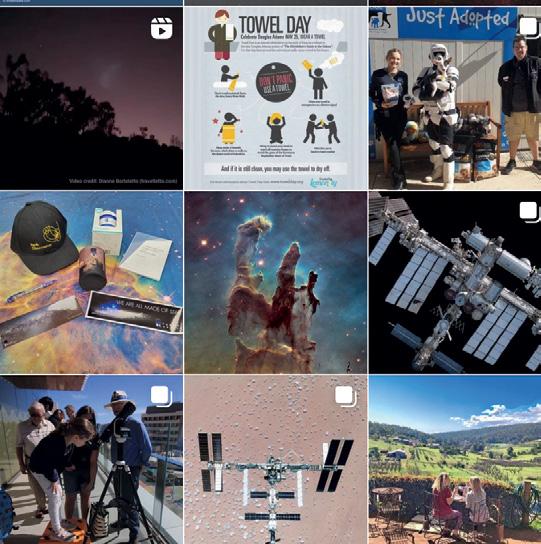
@abby_maltese – aerospace engineer
@spacewithsyrup – aerospace engineer

@annamarv – aerospace engineering student
#4
Obsessed with space or engineering? There are plenty of others out there like you! Sign up for a hackathon like Moonhack or seek out events put on by groups like the Australian Youth Aerospace Association, which runs the Astra online space program.
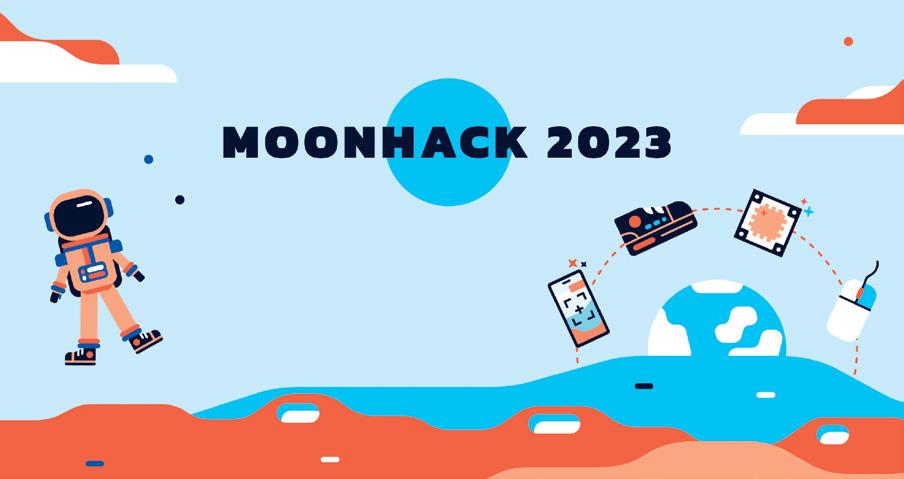
If you use Scratch at school, check out the Astronaut Reaction Game. Or for some serious after-school fun, try Space Engineers on your Xbox or PlayStation – it’s a game all about engineering and exploring. –
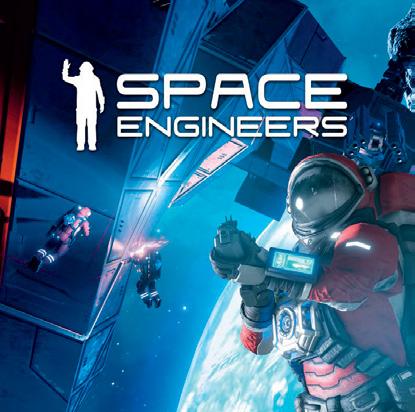 Charis Palmer
Charis Palmer
Careers with STEM: Engineering 2023 is a publication and trademark of Refraction Media. Copyright © 2023 Refraction Media, all rights reserved. No part of this publication may be reproduced in any manner or form without written permission. If you would like to reproduce anything from this magazine, email: info@refractionmedia.com.au.
We acknowledge the Traditional Owners of country throughout Australia and recognise their continuing connection to land, waters and culture. We pay our respects to their Elders past, present and emerging. This issue went to press on 1 August 2023. Printed in Australia by IVE.
Cover image: Ben Ashmole
Produced and published by: Refraction Media
Co-founder, CEO & Publisher: Karen Taylor-Brown
Co-founder, CEO & Head of Content: Heather Catchpole
Managing Editor: Charis Palmer
Digital Content Strategist: Louise Meers

Sub Editor: Amelia Caddy
Art Director: Katherine Power

Writers: Gemma Chilton, Nadine Cranenburgh, Pippa Duffy, Danielle Lucas, Louise Meers, Charis Palmer, Cassie Steel, Rachel Williamson
SUBSCRIBE AND ORDER COPIES: CareerswithSTEM.com /subscribe
EDITORIAL & ADVERTISING ENQUIRIES: Email: info@refractionmedia.com.au or +612 9188 5459
POSTAL ADDRESS: PO Box 154, Oyster Bay, NSW 2225, Australia
CareerswithSTEM.com

ISSN 2209-1076
